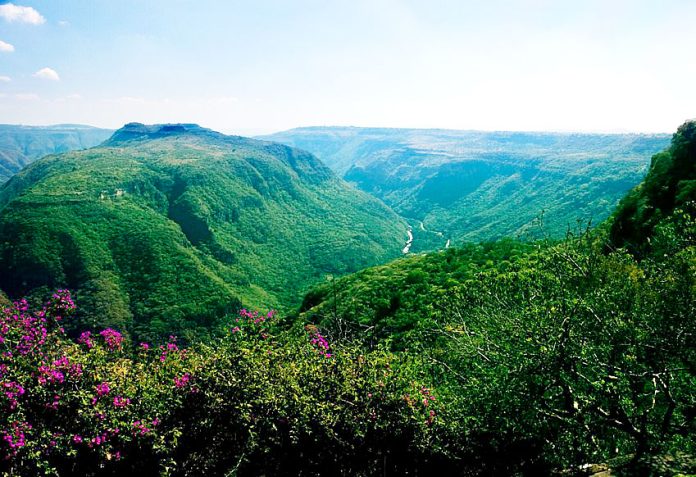Head north out of Guadalajara too rapidly, and you will find yourself flying through the air and falling 530 meters: welcome to la Barranca de Huentitán!
Most people, of course, prefer to descend into this majestic canyon by walking down the extremely steep Huentitán Trail, which starts at the northern edge of the city and takes you all the way to the banks of the Santiago river. Believe it or not, there are actually a handful of sports enthusiasts who run down (and back up!) the Huentitán Trail every weekend.
For years I heard rumors that there was a botanical garden somewhere near that trail. Eventually, I discovered that the rumors were true. It is known as Jalisco Botanical Garden, and it’s run by the state water commission.
The project, it seems, goes back to 2003, when Mexico’s Environment Ministry asked the water commission to create a botanical garden where all the biodiversity of the Huentitán canyon could be represented and where the most important species of its trees could be reproduced for the purpose of reforestation, which is one of the commission’s responsibilities.
After many phone calls to commission representatives, I was fortunate enough to obtain permission to visit the botanical garden, even though it’s still in the developmental stage and not open to the general public. It’s located a mere two kilometers north of Guadalajara’s ever-busy Ring Road, or Periférico, just below the city’s very popular zoo.
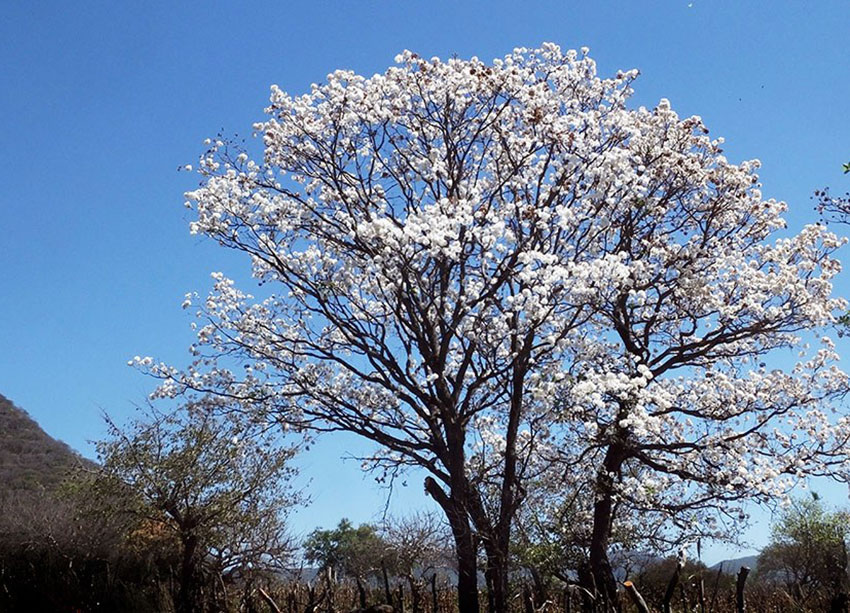
After a wild, kilometer-long ride along a very rough and rocky track, we arrived at the garden entrance, where we met several people who have been working on this project for years.
We began our walk at 1,500 meters altitude in a pine forest, where we learned that Mexico has more species of pine than any other country in the world. After only a few minutes walking downhill, we left that cooler climate and found ourselves among what some call “tourist trees” (Bursera simaruba). They appear red and peeling like many a tourist. In Spanish, they are commonly called papelillos, so named for their paper-like bark that peels off in small strips.
“We have 15 species of Burseraceae here,” said one of our guides, agronomist Roy Alberto Cañeda. “We have created special areas where you can see many members of this and other tree families, such as the Moraceae, or fig family. This could be very useful to researchers and students.”
I asked Cañeda why he chose his profession. He said he’s always loved nature.
“I love the stars, I love the Earth,” he said. “I love getting all muddy, breathing in the smells of plants. I’m fascinated by their colors. For me, this is what life is all about.”
He studied agronomy at the University of Guadalajara’s Center for Biological and Agricultural Sciences. There he had the pleasure of knowing the late Luz María Villareal de Puga, considered the mother of botany in western Mexico.
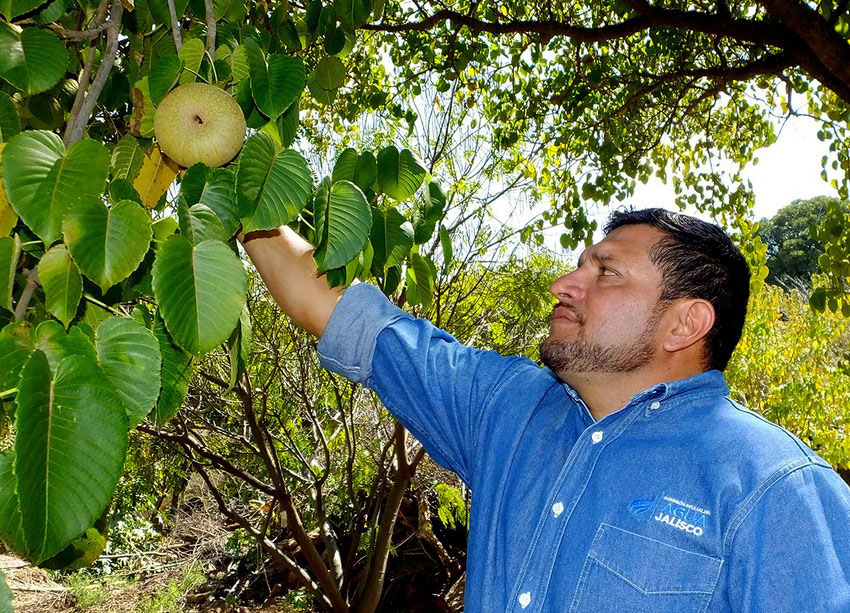
“She instilled in me a love for this science and these species,” said Cañeda, “and I consider myself lucky for having ended up working in this beautiful place.”
As we were walking along, we were introduced to some really weird trees. One was called a habillo (Hura poliandra), or a sandbox tree. It exudes a highly toxic white latex, famous for “inflaming testicles.” The seed pod of this hard-to-find tree, we were told, also has an extraordinary reputation. When it reaches maturity it explodes so noisily, it sounds like a gunshot. It shoots its seeds many meters in every direction.
The Maya-Ethnobotany.org website comments about this remarkable seed pod.
“There are no photos or videos of Hura exploding,” it says. “Such a video should win an award if it existed, and if the video photographer lived to send in the clip.”
Actually, I did find a video of someone breaking a the seed with a machete, and there was, indeed, a loud explosion.
After years of work on preserving and collecting specimens, Hura poliandra is just one example of a wealth of tree and plant species growing in the botanical garden, Cañeda says, even some that are hard to find.
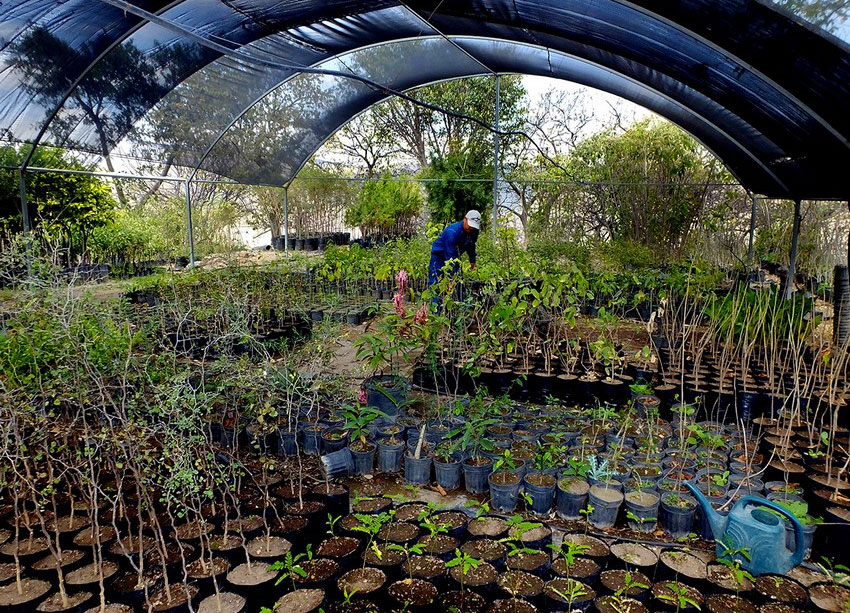
“You know, we are only required to maintain the native species here, but now we have 400 other species as well,” he said. “We started out preserving the typical trees of the canyon, but the project took on a life of its own, and on these 26 hectares we now have a good representation of trees and plants, not only of the Huentitán Canyon but of the state of Jalisco, all of Mexico, and, in fact, the world.”
This means that a researcher who needs to collect seeds of some tree in the desert, or one that grows on top of the 4,680-meter Nevado de Toluca, can find it here.
“Here he or she will find all kinds of species right at hand,” Cañeda said.
From an Alpine climate, we made our way to the equivalent of a tropical coast, where we crossed a nice-looking but bad smelling river, along which we found reeds, bamboo and orchids. The staff say they hope the day will come when they’ll see the end of the river pollution and the transformation of this part of the botanical garden into something truly spectacular.
Our downward journey ended at a mirador, or lookout point, offering us a magnificent panoramic view of Huentitán Canyon. Far below us, we could clearly see the Puente de Arcediano, Latin America’s first suspension bridge.
This venerable bridge was dismantled in 2005 in preparation for a huge dam that never materialized. It was finally re-rebuilt in 2013 after being moved 700 meters downstream to its present location directly below the botanical garden.
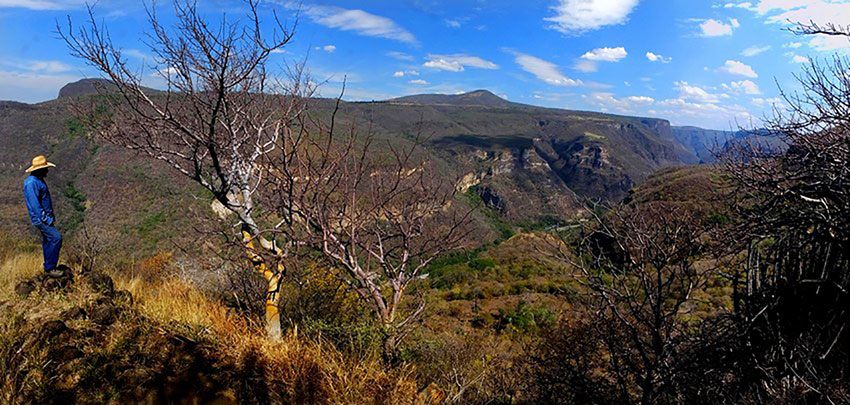
After we viewed the canyon, our guides took us to several greenhouses, where thousands of potted trees are stored, ready for the water commission to plant in areas requiring reforestation with endemic species.
Guadalajara’s Technical Institute of Higher Education (ITESO) calls this place “the most important botanical garden in western Mexico.” I would go further because it appears to me that it may be unique in Mexico, given that it can grow plants accustomed to four different climates. I wonder how many other arboreta around the world can do better.
In 2018, the state water commission announced that Guadalajara’s Tec de Monterrey university would take charge of the botanical garden and that it would “create proposals for supplying the garden with what it needs, so the public can visit it and become familiar with the great natural richness of Jalisco.” This coincides with rumors I’ve heard for many years that this botanical garden will “soon be open to the public.”
We are waiting.
[soliloquy id="127116"]
The writer has lived near Guadalajara, Jalisco, for 31 years, and is the author of “A Guide to West Mexico’s Guachimontones and Surrounding Area” and co-author of “Outdoors in Western Mexico.” More of his writing can be found on his website.
